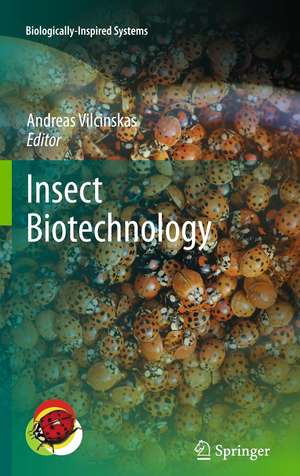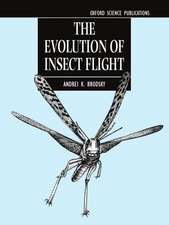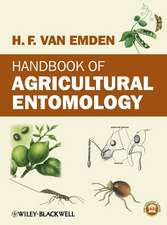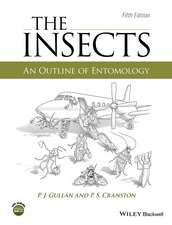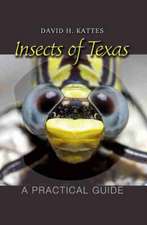Insect Biotechnology: Biologically-Inspired Systems, cartea 2
Editat de Andreas Vilcinskasen Limba Engleză Paperback – 5 dec 2012
| Toate formatele și edițiile | Preț | Express |
|---|---|---|
| Paperback (1) | 943.43 lei 6-8 săpt. | |
| SPRINGER NETHERLANDS – 5 dec 2012 | 943.43 lei 6-8 săpt. | |
| Hardback (1) | 948.16 lei 6-8 săpt. | |
| SPRINGER NETHERLANDS – 29 oct 2010 | 948.16 lei 6-8 săpt. |
Preț: 943.43 lei
Preț vechi: 1150.52 lei
-18% Nou
Puncte Express: 1415
Preț estimativ în valută:
180.54€ • 189.83$ • 149.17£
180.54€ • 189.83$ • 149.17£
Carte tipărită la comandă
Livrare economică 16-30 aprilie
Preluare comenzi: 021 569.72.76
Specificații
ISBN-13: 9789400733886
ISBN-10: 9400733887
Pagini: 280
Ilustrații: XII, 268 p.
Dimensiuni: 155 x 235 x 15 mm
Greutate: 0.39 kg
Ediția:2011
Editura: SPRINGER NETHERLANDS
Colecția Springer
Seria Biologically-Inspired Systems
Locul publicării:Dordrecht, Netherlands
ISBN-10: 9400733887
Pagini: 280
Ilustrații: XII, 268 p.
Dimensiuni: 155 x 235 x 15 mm
Greutate: 0.39 kg
Ediția:2011
Editura: SPRINGER NETHERLANDS
Colecția Springer
Seria Biologically-Inspired Systems
Locul publicării:Dordrecht, Netherlands
Public țintă
ResearchCuprins
Part 1: Insect Biotechnology in Medicine 1: The greater wax moth Galleria mellonella as an alternative model host for human pathogens; Krishnendu Mukherjee, Eugen, Domann, Torsten Hain2: Fruit flies as models in biomedical research – a Drosophila asthma model; Thomas, Roeder, Kerstin Isermann, Christina Wagner, Christine Warmbold3: Therapeutic potential of antimicrobial peptides from insects; Jochen Wiesner, Andreas Vilcinskas4: From traditional maggot therapy to modern biosurgery ; Andreas Vilcinskas5: Insect-associated microorganisms as source for novel secondary metabolites with therapeutic potential; Helge Bode,6: Potential pharmaceuticals from insects and their co-occurring microorganisms; Konrad DettnerPart 2: Insect Biotechnology in Plant Protection7: Insect antimicrobial peptides as new weapons against plant pathogens; Carin Jansen, Karl-Heinz Kogel8: Protection of Crops against Insect Pests using RNA Interference; John Gatehouse, Daniel Price9: Insect Transgenesis and the Sterile insect technique; Marc Schetelig, Ernst Wimmer, Part 3: Industrial applications of Insect Biotechnology 10: Insect cells for heterologous protein expression; Christoph Becker-Pauly, Walter Stöcker11: Biotechnologies based on silk; Frantisek Sehnal 12: Biosensors on the basis of insect olfaction; Sebastian, Paczkowski, Bernd Weißbecker, Michael Schöning, Stefan Schütz13: Insect-Inspired technologies: Insects as a source for biomimetics; Stanislas Gorb
Textul de pe ultima copertă
Insects have plagued humanity throughout history both as competitors in human nutrition and as vectors of diseases such as plague and malaria. On the other hand, beneficial insects are economically important both as allies in biological control of pest or vector insect species and as pollinators. Insects are by far the most diverse group of organisms on earth. Their evolutionary success regarding species diversity can be expanded to include a tremendous repertoire of bioactive molecules. Powered by the rapid development of techniques and tools in molecular biology a treasure hunt has begun in exploring applications of new insect-derived peptides and enzymes as leads for novel therapeutic drugs, as transgenes to engineer disease-resistant crops or as catalysts of industrial processes. The run in identification of novel insect genes can be expanded beyond those encoding bioactive molecules to include targets for selective control measures in plant protection. Past decade has witnessed the complete sequencing of genomes from beneficial (bee Apis mellifera or the silk moth Bombyx mori) as well as from vector (mosquito Anopheles gambiae) or pest insects (the red flour beetle Tribolium castaneum or the pea aphid Acyrthosiphon pisum). Entering the postgenomic era these insects have become important models in applied sciences while others such as the greater wax moth Galleria mellonella are being developed as alternative model hosts for human pathogens to replace ethically debatable and expensive mammalian hosts. In addition, insect derived cell lines prosper as expression systems for vaccines and other peptides or proteins. The rapid and multifaceted developments in applying insect-derived molecules or cells in the red, green or white biotechnology can be summarized under term Insect Biotechnology. This book provides for the first time a comprehensive overview about this prospering research field with considerable economic potential.
Caracteristici
First book about a novel and rapidly developing research field Provides an comprehensive overview about emerging applications of insects or derivatives thereof in medicine, plant protection and industrial biotechnology Written by leading scientists in developing cutting edge technologies
